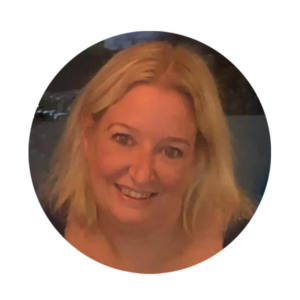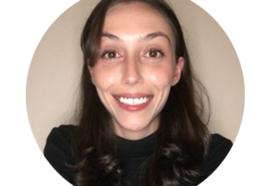Eating disorders, such as anorexia nervosa and bulimia, are not straight forward; to celebrate eating disorder awareness week, we spoke to Marie Young, a Child and Adolescent Mental Health Service (CAMHS) Eating Disorders Specialist Nurse, and Bea Fenske, an Eating Disorders Nurse, from Community Eating Disorders Service (CEDS) Bedfordshire and Luton CAMHS, to give us an overview of what it is like to work in a Community Eating Disorders Service.
Can you give us an overview of what eating disorders and disordered eating are?
People who have an eating disorder have negative beliefs about themselves and about their eating, body shape, and weight.
In comparison, disordered eating can be due to a variety of reasons such as anxiety induced nausea (so someone who doesn’t want to eat) and can also be a significant way of controlling emotions or trauma of any kind. (Nurkkala et al, 2016)
It can be difficult to unpick the root cause of food and fluid restriction. However, this can be achieved with a thorough assessment, with different disciplines of clinicians.
Have you noticed any changes in uptake in your service?
Since the pandemic, from our experience, our eating disorder patients coming to our Child and Adolescent Mental Health Services (CAMHS) are presenting with more additional comorbidities, such as gender questioning, autism, emotional dysregulation, and self-harm.
As a result, in our own CAMH service, we have started a Dialectical Behaviour Therapy (DBT)1 skill group, due to the increase in co-morbid mood conditions that can go alongside eating disorders, to aid relapse prevention. We also conduct joint work with our crisis teams, Neurodevelopment team and Emotional behaviour team, as well as are frequently doing joint assessments with colleagues to have a collaborative holistic approach to patient care.
How is your CAMHS service coping with demand?
We are seeing more patients being referred for eating disorder treatment who need an urgent assessment. We know that many services are under pressure and as a result of longer waiting times, we are seeing more severe presentations, with some patients potentially needing hospital admission. This could be due to a number of reasons, such as difficulty of getting a GP appointment for a referral, the camouflaging of eating disorders, and lack of resources such as staff, for example.
In general, Child and Adolescent Mental Health services (CAMHS) are stretched and under-resourced in managing eating disorders and disordered eating; therefore, patients will often be referred to the eating disorders team – thus putting further pressure on resources. To put this into context, a recent statistic is that the percentage of children and young people admitted to hospital with eating disorders has increased 35% in the last year (Naylor, 2022). In the previous year, there was a 128% increase of young people starting treatment within the NHS inpatient or community services, which was an increase by two thirds, compared to the previous year (Naylor, 2022). This is substantial and concerning evidence. These statistics are also reflected in our own trust, with our numbers having increased significantly over the last few years with referrals for eating disorders averaging 30-35 per month in 2021 and 35-50 per month in 2022. We are also starting to see more referrals for young people aged 13 years old and under.
So presumably, your service has a waiting list?
Whilst, at a local level, our own trust does not currently have a waiting list, this does mean that our clinicians find themselves having to do extra assessments for new patients due to the urgent nature of their condition. We also strictly triage any referrals to ensure that we only see referrals for eating disorders and, in the last year, new training has been rolled out for CAMHS professionals to educate them on the difference between disordered eating and eating disorders. Furthermore, to help with the pressure on CAMHS and NHS services, local eating disorder charities have also put on training for general professionals on how to recognise disordered eating.
What are some of the impacts an eating disorder can have on a young person?
Living with an eating disorder can have implications, not just on the mental and physical health of the patient, but also on a young person’s education and personal development. (Schmidt et al, 2016). Interventions such as the Medical Emergencies in Eating Disorders (MEED) guidelines (Royal College of Psychiatrists, 2022), Family-based therapy2 and Cognitive Behavioural Therapy (CBT)3 are important to give appropriate care. However, reduced timetables within school and close liaison with schools to promote education around eating disorders, whilst monitoring physical education in and out of school, are also important to consider.
What types of care does your service offer?
We are lucky to have a wide range of professionals within our team and a home treatment team who help patients in their home, for example by providing meal support, in order to avoid admission to hospital. We also have a parent liaison worker with lived experience, whose child was under our service previously, and encourage parents and carers to get involved with our DBT skills group so that they can learn coping skills, as well as encourage them to speak to their GP for support as well. We also work with a great nurse, Bea (Adult Nurse) who has struggled herself with an eating disorder.
Bea, would you mind sharing some of your own experiences?
Eating disorders have played a part in my personal life as, aged 16, I was diagnosed with anorexia nervosa and underwent intensive community treatment within CAMHS and into adulthood, so this further inspired me. This led me to pursue a career in nursing and, once I gained some general nursing experience, the opportunity arose to join the CAMHS Eating Disorder Team. I was recruited into an Eating Disorder Nurse role within a new service – the Home Intensive Treatment Team. This new service was set up due to the increasing number of complex eating disorder presentations and increased acuity at the time of referral, leading to an increased number of hospital admissions.
Eating disorders are, by nature, very complex, however using my own experience to support others through a really dark period of their life, I feel, enables young people to feel less alone, and encourages young people to work towards a life beyond the eating disorder. Life with an eating disorder can feel desperate, hopeless, and, at times, not worth it. I often describe the recovery journey as “a long old slog” (that’s the technical term), because that’s how it feels; it often feels like walking through treacle. In the depths of the eating disorder, for young people to see the reality of “the other side”, I feel is important. Whilst maintaining the professional boundary, I share small parts of my personal experience with some young people under our service, usually the slightly older ones, and more often than not, it appears a weight is visibly lifted from their shoulders, because someone * really * gets it.
Thank you very much for your time, how could our readers find out more about how you work?
We are both happy to discuss this blog further with any interested professionals as this is a great passion of ours. We would also recommend that they look at the ACAMH resources as the topic guides, podcasts, and recorded videos.

Marie Young, (Bsc Hons/Mental health)
Marie is a Registered general and mental health nurse with nearly 20 years experience in a variety of fields with the last 10 being in CAMHs and more specifically Eating Disorders. This is an area Marie is very passionate about and due to present in March at the Best Practice conference. Marie has worked globally within Australia and in different areas of the UK. Marie is also a Bedfordshire University clinical fellow and likes to use a variety of resources and acquired training to help young people recover.

Bea Fenske (Bsc Hons)
Bea is a Registered general Nurse who has worked in adult community for some time and now works as part of a Home Intensive Treatment Team assisting young people with eating disorders to stay out of hospital and also supporting them upon discharge. Bea has some personal lived experience which she uses at times where the patient can benefit from this.
Terminology
1 Dialectical Behaviour Therapy (DBT): A multi-component cognitive-behavioural treatment, in which the patient learns to manage difficult emotions by experiencing, recognizing and accepting them. DBT therapies use a balance of acceptance (accepting yourself as you are) and change (making positive changes in your life) techniques. Once the patient has learnt to accept and regulate emotions, they are then more able to change a harmful behaviour, such as self-harming. In general, DBT includes individual psychotherapy, family group skills training, telephone coaching, and therapist team consultations.
2 Family Based Therapy: A talking therapy that family members or carers take part in along with the child or young person. This involves working with a practitioner and allows you to explore how the eating disorder has affected you and how your family can support you with treatment. (NICE, 2020)
3 Cognitive Behavioural Therapy (CBT): A collaborative treatment that can be delivered in various formats, such as one to one with the child or young person, in a group, or with family/parent/carers. CBT has been used to treat several different mental health conditions in children and young people and can help the child or young person to recognise their feelings, and the body sensations that go with them, to clarify their thoughts and develop coping skills.
Resources
- National Institute of Clinical Excellence, 2020, ‘Eating disorders in children and young people’
- National Institute of Health Care and Excellence , 2020 ‘Eating Disorders: recognition and treatment’ https://www.nice.org.uk/guidance/ng69/ifp/chapter/Anorexia-nervosa-treatment-for-children-and-young-people#family-therapy
- Naylor, H., 2022, ‘Understanding The Rise of Eating Disorders in the UK – 2022’, The London centre for Eating Disorders https://www.thelondoncentre.co.uk/the-blog/understanding-the-rise-of-eating-disorders-in-the-uk-2022
- Royal College of Psychiatrists, 2022, ‘Medical emergencies in eating disorders (MEED)
- Guidance on recognition and management’ https://www.rcpsych.ac.uk/improving-care/campaigning-for-better-mental-health-policy/college-reports/2022-college-reports/cr233
- Marjukka Nurkkala et al., 2016, ‘Disordered eating behavior, health and motives to exercise in young men: cross-sectional population-based MOPO study’, BMC Public Health 2016; 16: 483. https://www.ncbi.nlm.nih.gov/pmc/articles/PMC4898374/


